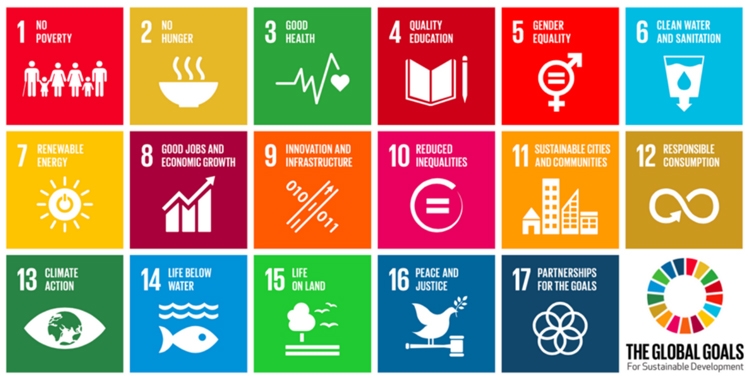The Blue Economy and the U.N. Sustainable Development Goals

The Center for the Blue Economy’s work aligns with the United Nations’ Sustainable Development Goals.
The Blue Economy comprises the economic activities and supporting institutions, relationships, and choices that create sustainable wealth from the world’s oceans and coasts. The Center examines ways that ocean and coastal resources can support economic development that provide decent livelihoods and maintains, restores, and enhances the critical coastal and marine ecosystems that provide the foundations for human wellness and prosperity.
The 2030 Agenda for Sustainable Development, adopted by all United Nations Member States in 2015, provides a shared blueprint for peace and prosperity for people and the planet, now and into the future. At its heart are the 17 Sustainable Development Goals (SDGs), which are an urgent call for action by all countries - developed and developing - in a global partnership. They recognize that ending poverty and other deprivations must go hand-in-hand with strategies that improve health and education, reduce inequality, and spur economic growth – all while tackling climate change and working to preserve our oceans and forests.
The Center’s work aligns with the UN’s Sustainable Development Goals:
|
Sustainable Development Goal |
Implications for the Blue Economy & Blue Economic Development |
|
SDG 2: End hunger, achieve food security and improved nutrition and promote sustainable agriculture |
- promotes sustainable fisheries and aquaculture as key food sources. Sustainable food supplies from the ocean will require new sources such as plant aquaculture. |
|
SDG 3: Ensure healthy lives and promote well-being for all at all ages |
- requires clean water as essential to human and ecosystem health, as well as supporting the emotional well-being humans in all stages of their lives. |
|
SDG 7: Ensure access to affordable, reliable, sustainable and modern energy for all |
- includes the fast emerging uses of natural ocean processes to generate electricity, including offshore wind. |
|
SDG 9: Build resilient infrastructure, promote inclusive and sustainable industrialization and foster innovation |
- requires major efforts to create new ocean products and shift towards production processes that restore ocean health and address climate change. |
|
SDG 11: Make cities inclusive, safe, resilient and sustainable |
-requires that coastal cities are resilient to climate change impacts and maintain coastal ecological health. |
|
SDG 12: Ensure sustainable consumption and production patterns |
- will require that waste streams that enter marine ecosystems are reduced and ultimately eliminated. |
|
SDG 13: Take urgent action to combat climate change and its impacts |
- includes economic opportunities and challenges arising from the ocean’s critical role in the earth’s carbon cycle. |
|
SDG 14: Conserve and sustainably use the oceans, seas and marine resources |
- promotes the restoration of marine ecosystems to their fully-functional and healthy states. |
|
SDG 17: Revitalize the global partnership for sustainable development |
- requires integrated actions across sectors and boundaries because the oceans are our most globally shared natural resource. |
For More Information
Read More: The 2030 Agenda for Sustainable Development
